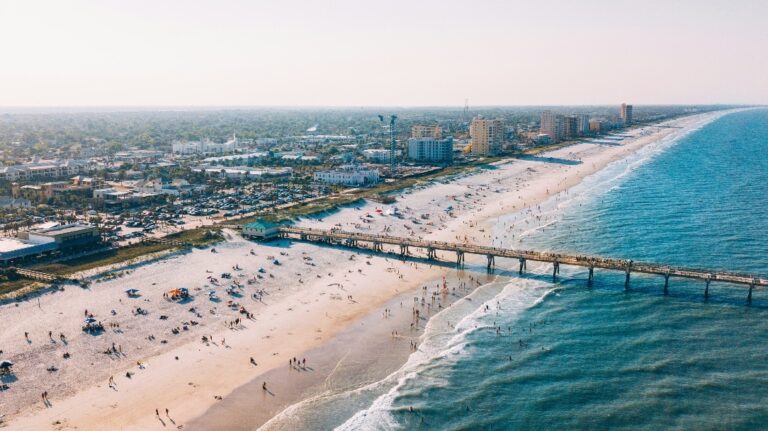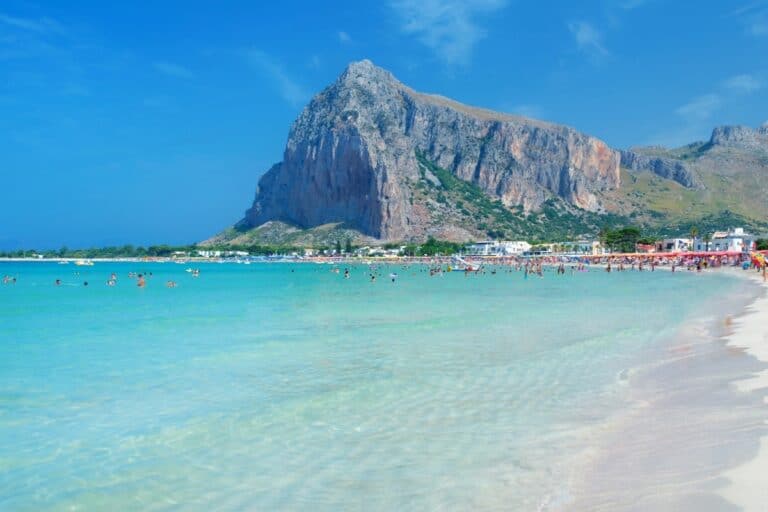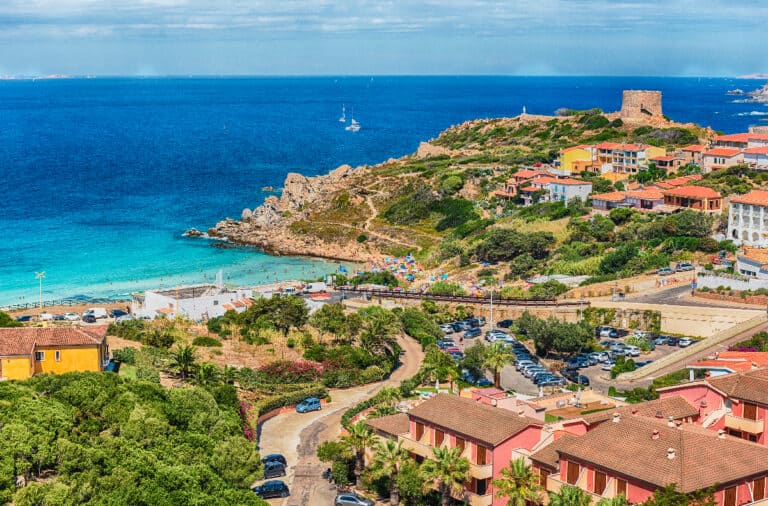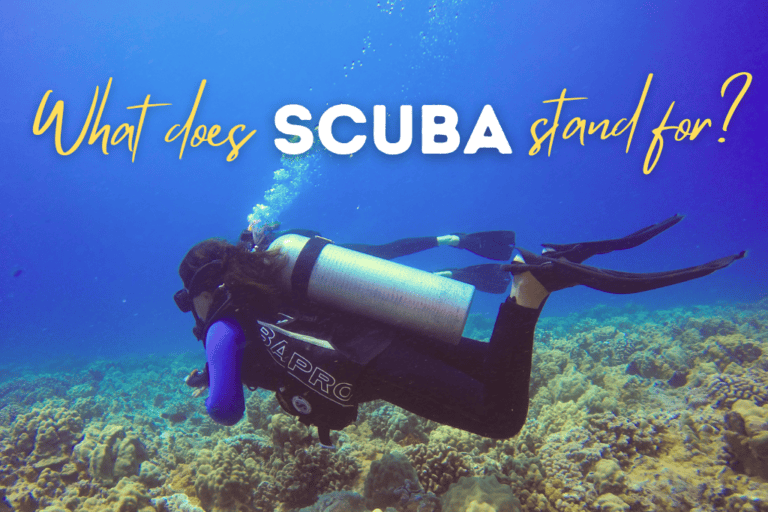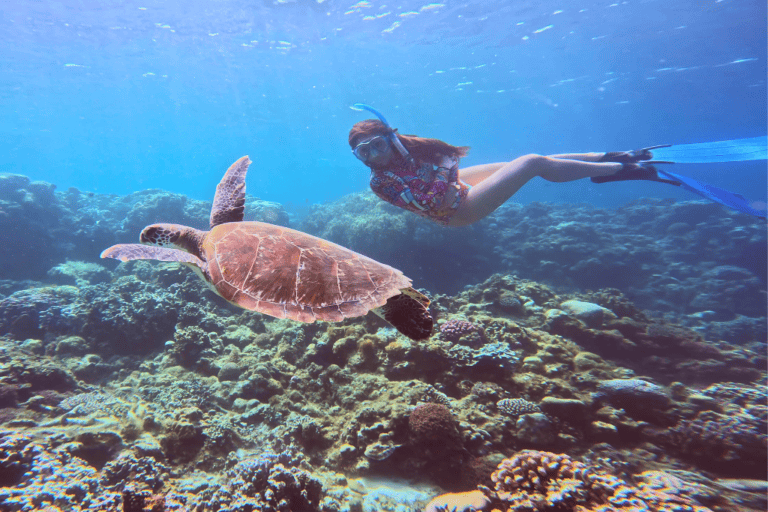Ultimate Guide to Diving in Elba Island: What to Expect in Marina di Campo


So, you’re thinking of diving in Elba Island? Great choice! You’re about to discover one of Tuscany’s best-kept secrets—an underwater world bursting with marine life, incredible visibility, and dive sites that will make you want to extend your trip.
In this guide, I’m diving into the sites around Marina di Campo, a coastal town in the commune of Campo Nell’Elba in Elba Island, Italy. This area is packed with some of the island’s best underwater spots, from shoals teeming with barracudas to deep reefs covered in red gorgonian forests.
I’ve actually spent four summers diving in Elba, and I just can’t stop coming back—it’s that good. Regardless whether you’re a newbie or a seasoned diver, I’ve got insider tips to make your trip epic. So grab your fins, and let’s dive right in!
PLAN YOUR TRIP WITH MY FAVORITE RESOURCES
Best accommodation site: Booking.com
Book top-rated tours: GetYourGuide.com
Best Dive Travel Insurance: Divers Alert Network (DAN) Insurance
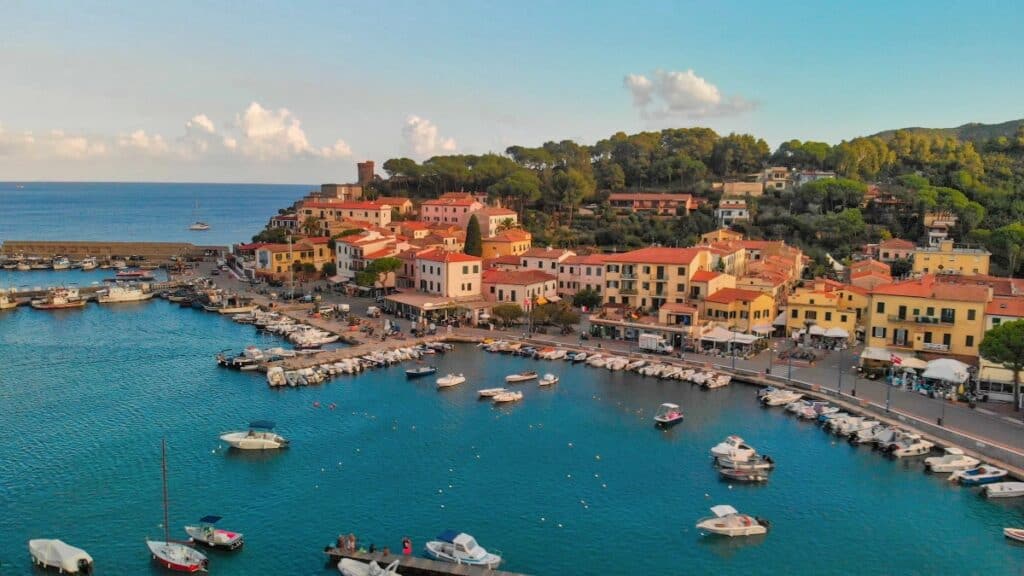
Elba Island Diving Overview
Sitting off the coast of Tuscany in the Tyrrhenian Sea, Elba is a scuba diver’s paradise with crystal-clear waters, thriving marine life, and a variety of dive sites for every level.
It’s also ridiculously easy to get to, just a one-hour ferry ride from Piombino Port in southern Tuscany. If you’re looking for a prime diving hub, Marina di Campo is the place to be.
This seaside town in the commune of Campo Nell’Elba is home to some of Elba’s best dive sites, from gorgonian-covered walls to wrecks and the submerged Madonna statue. It also boasts the island’s longest sandy beach, perfect for post-dive downtime.
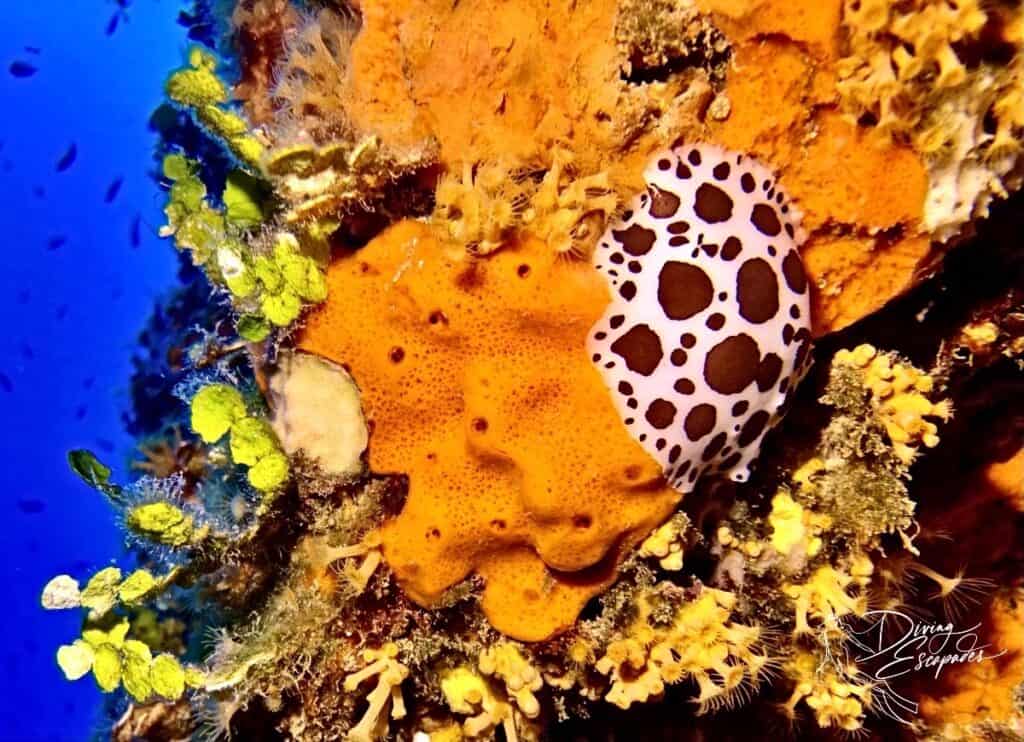
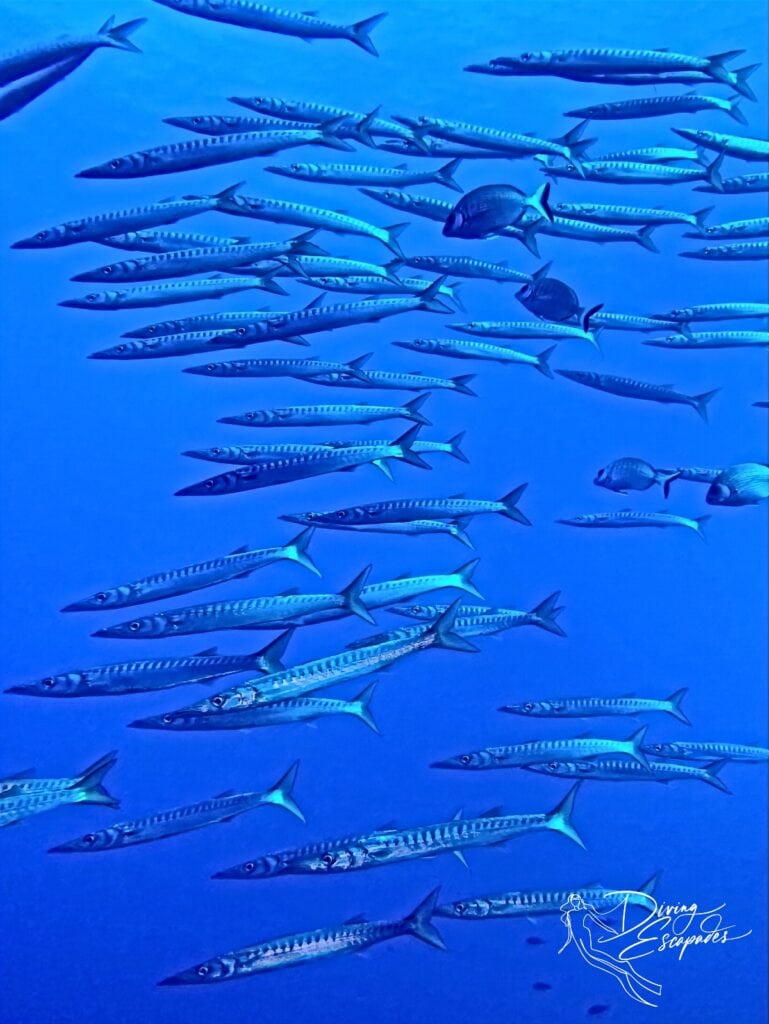
Diving here is next-level. I’m talking about deep walls, barracuda shoals, or macro life like nudibranchs. I even did my Deep Diver and Night Diver certifications here, and diving under the stars with just a torchlight? Absolute magic.
Beginner or experienced, you’ll find a site that suits you. The calm conditions around Marina di Campo make it great for training dives, while deeper sites offer more challenges. No matter your level, Elba’s dive sites are worth exploring.
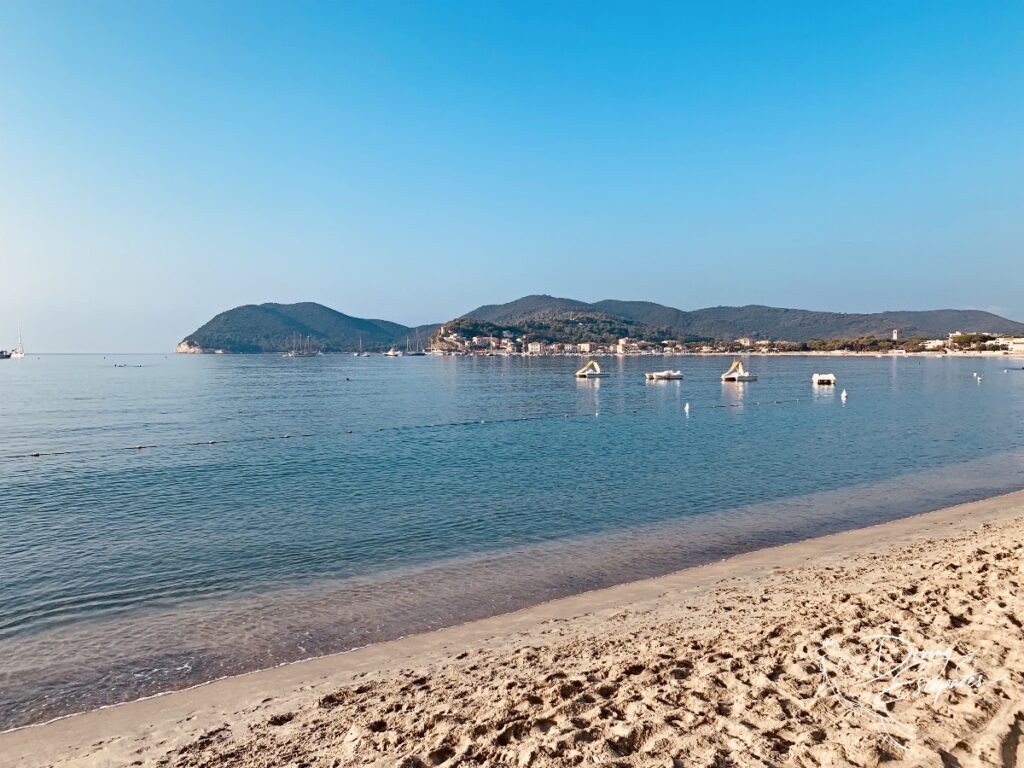
Recommended Dive Center: Sub Now Diving Center
If you’re planning to dive in Elba, Sub Now Diving Center in Marina di Campo is hands down the way to go. I’ve dived with them four summers in a row, and every time, they’ve gone above and beyond to make each dive unforgettable.
What makes them stand out? First, the welcoming atmosphere. Antonio, the owner, isn’t just an experienced dive operator—he’s the kind of person who makes you feel at home the moment you walk through the door. He treats every diver like family, and his passion for the underwater world is reflected in every dive. So whether it’s your first time diving Elba or your tenth, you’re in expert hands.
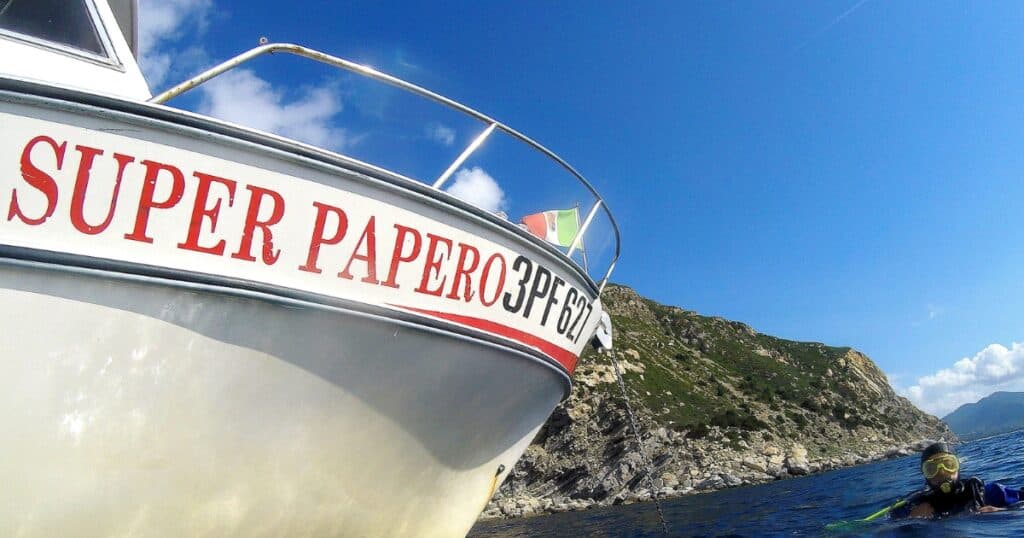
Now, let’s talk about Super Papero—yes, that’s the dive boat’s name, and yes, it means Super Duck. But don’t let the name fool you—this boat is built for divers. It’s spacious, comfortable, and stocked with everything you need for a great day at sea. And because diving works up an appetite, they’ve got hot tea and snacks on board—because nothing beats warming up with a drink and a treat after a dive.
You’ll get two boat dives daily, giving you plenty of bottom time at Elba’s best dive sites. And if you’re up for a little adventure, they occasionally run night dives—a must-try if you want to see the reef come alive under torchlight.
If you’re diving in Elba, Sub Now Diving Center is the top choice. Professional, welcoming, and run by people who truly love what they do—it’s the kind of dive center that keeps you coming back for more.
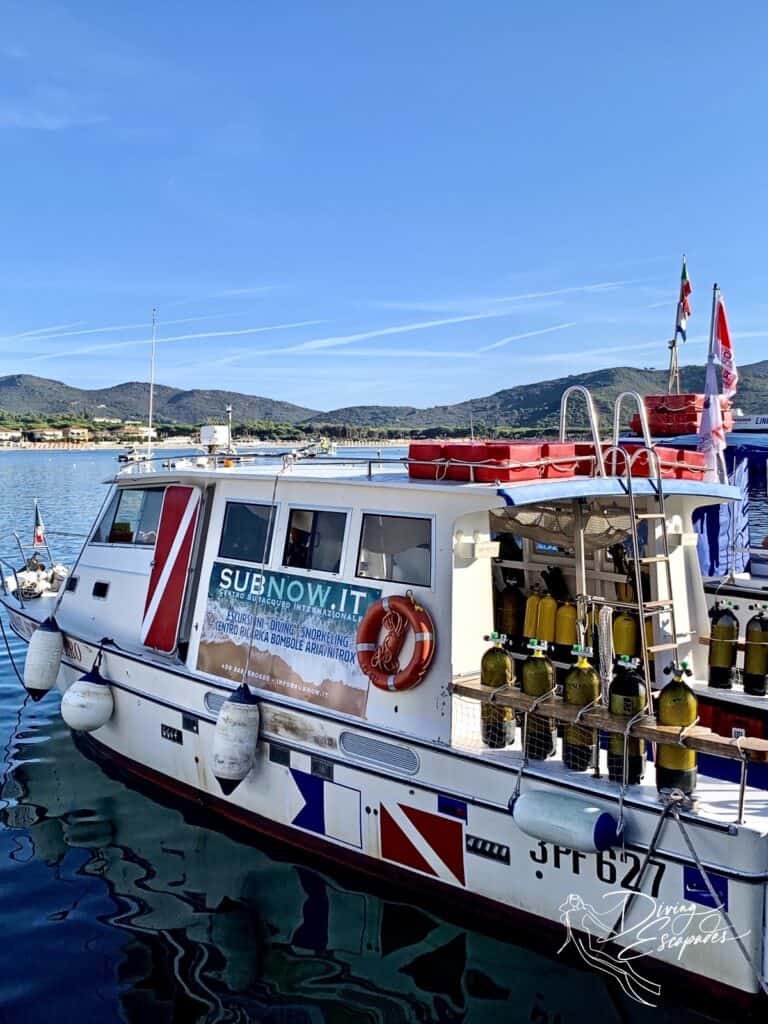
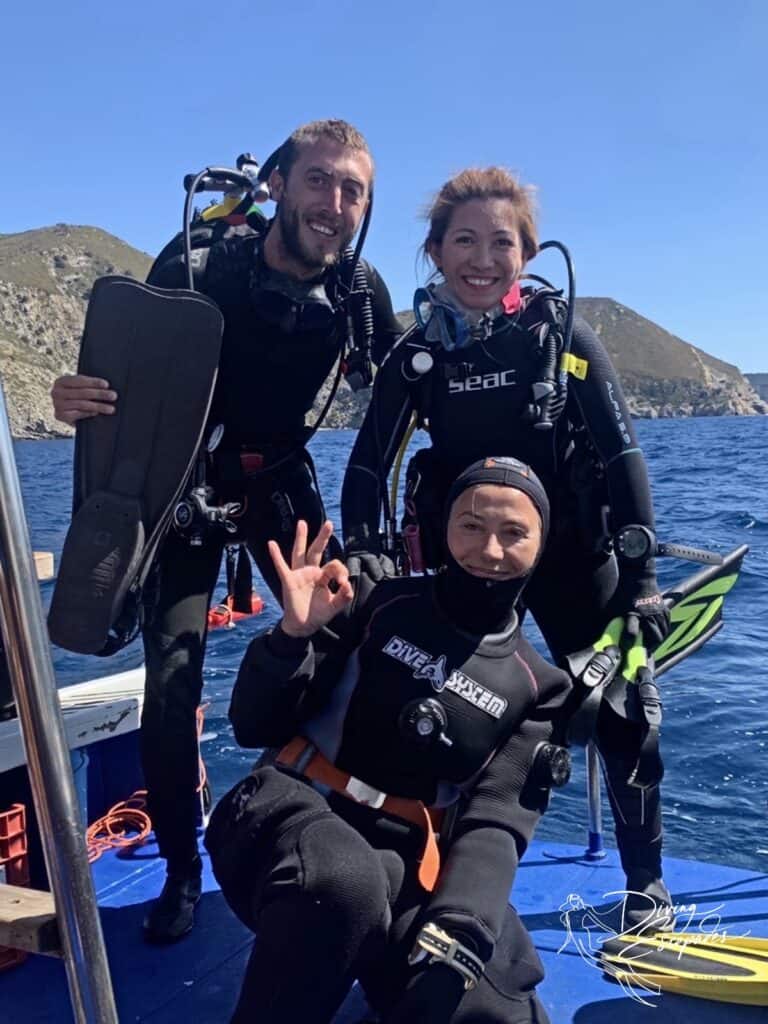
Best Diving Sites in Elba Island
Here are some of the must-dive sites that make Elba a true Mediterranean gem.
1. Scoglio della Triglia – The Submerged Madonna
Ever wanted to see a Madonna statue underwater? Well, here’s your chance! Located near Marina di Campo, this dive site is perfect for all levels and offers a mix of adventure and tranquility.
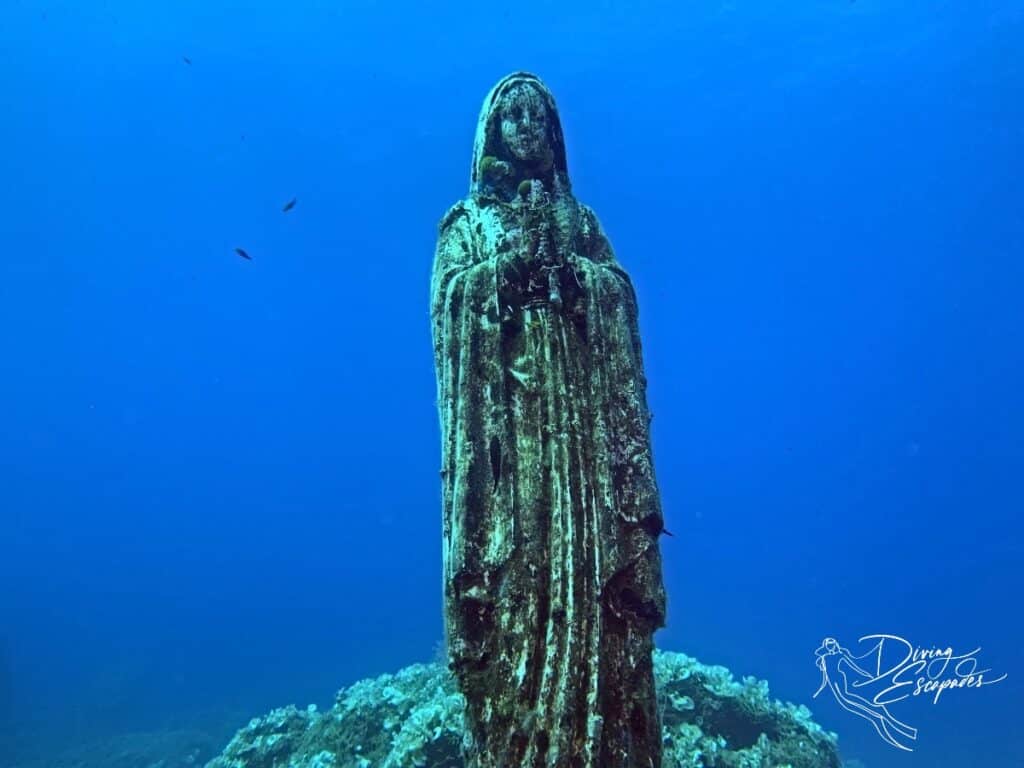
I never get tired of seeing the submerged Madonna. Every time I dive here, it’s like greeting an old friend. There’s something incredibly peaceful about watching her sit on the seabed, surrounded by colorful sponges and swirling schools of curious fish.
But the Madonna isn’t the only highlight. This site is teeming with marine life, from striped bream to wrasse and the occasional John Dory passing by. If you take a closer look at the rocky formations, you might spot Flabellina nudibranchs, their delicate pinkish-purple bodies adding a pop of color against the reef.
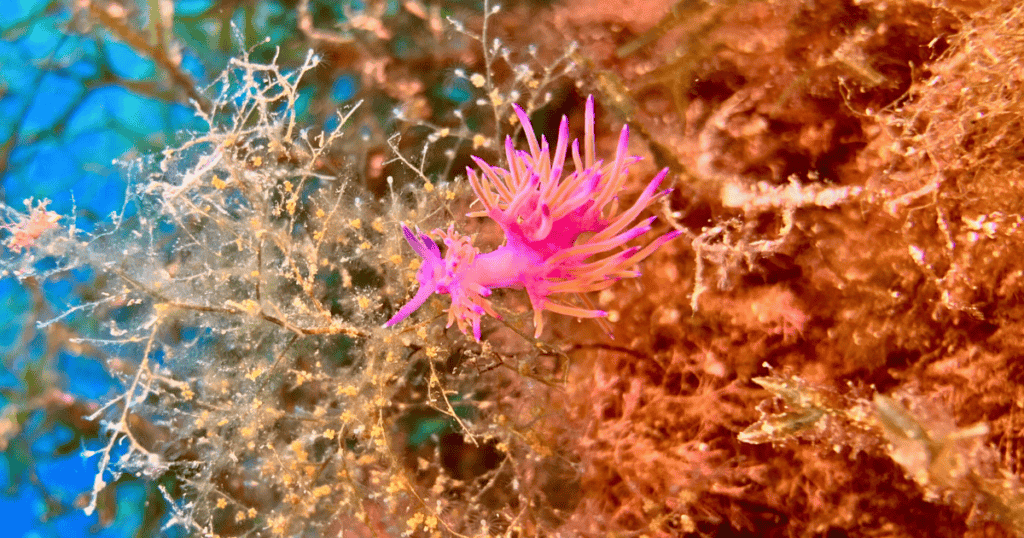
Octopuses love to tuck themselves into crevices here, and if you’re lucky, you might catch one out for a stroll.
PRO TIP: Bring a dive torch to fully appreciate the details of the statue and the vibrant hues of the sponges. If you enjoy underwater photography, this site offers fantastic compositions.
2. Secca di Capo Fonza – Barracuda Central
Love big schools of fish? Then get ready—this site is barracuda heaven.
The school of barracudas here is unreal. Every time I dive this site, I find myself filming them over and over again because I just can’t get enough. They move in perfect formation, circling slowly like a living vortex.

Beyond the barracudas, this site is home to plenty of snappers, scorpionfish, and moray eels peeking out from rocky crevices. The boulder formations here also make it a great spot for swim-throughs, adding an extra layer of adventure to your dive.
PRO TIP: Look up! Barracudas love to hover just above divers, creating the perfect opportunity for that iconic silhouette shot. If you want to get close to them, move slowly—they’re more likely to stick around if you don’t startle them.
3. Coralline – Red Gorgonian Wonderland
If you’re a fan of deep dives and vibrant coral gardens, Coralline is a must. Located at 30 meters, this site is famous for its stunning red gorgonian corals, which light up like fire when hit with a dive torch. The sight of these delicate sea fans swaying in the current is nothing short of magical.
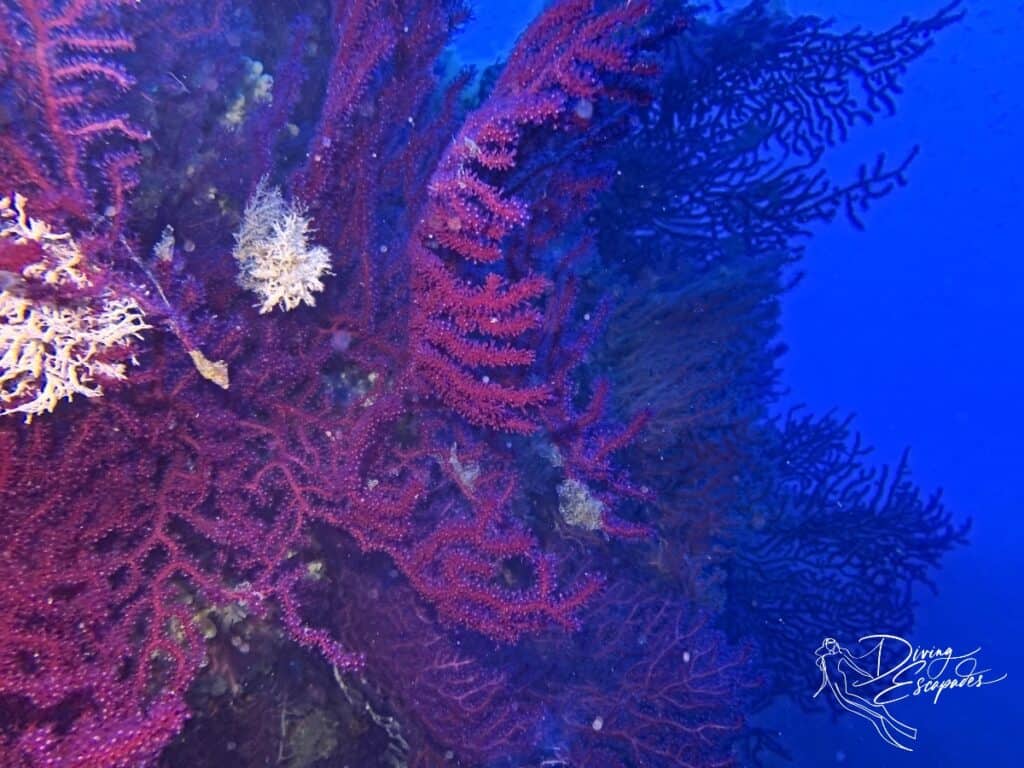
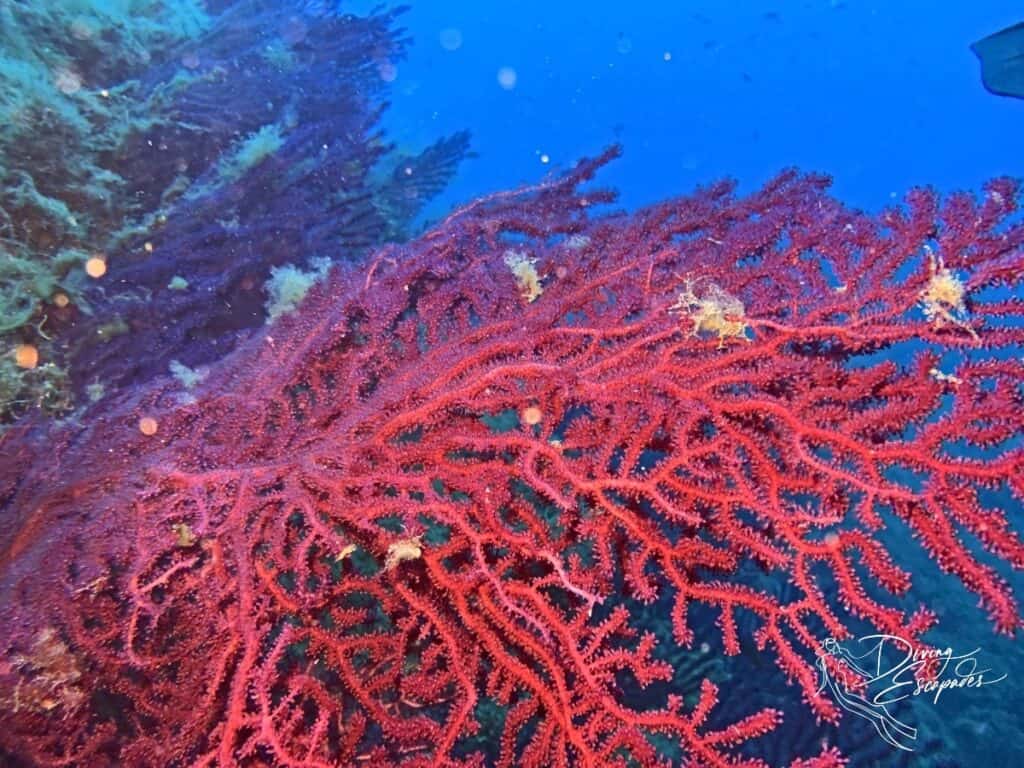
I’m a huge fan of red gorgonians, but the first time I dove here, I didn’t even realize how spectacular they were. Without a light, they just looked like dark purple fans, blending into the shadows.
But when I shone my dive torch, the transformation was incredible—the deep reds came to life like glowing embers. It was one of those moments where you just stop and take it all in, appreciating how surreal and beautiful the underwater world can be.
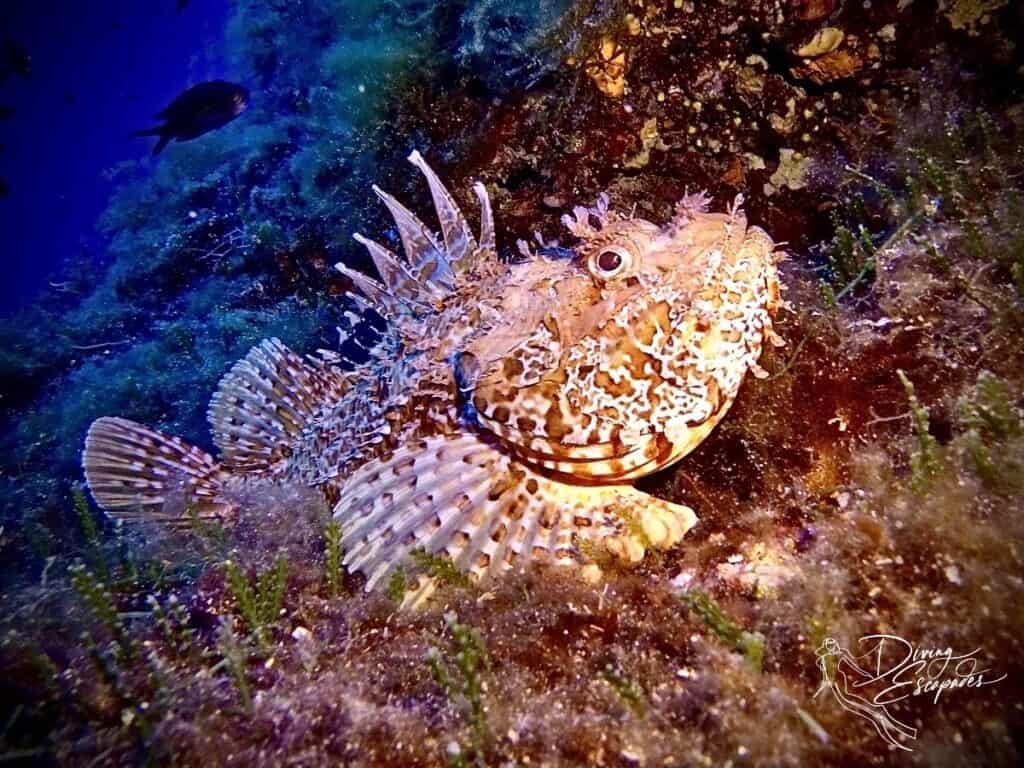
Aside from the corals, the marine life here is incredible. You’ll often spot spotted scorpionfish blending perfectly with the rocky bottom, as well as lobsters hiding in the cracks. Schools of amberjacks and dentex patrol the blue, moving with effortless speed.
And if you’re a nudibranch lover, keep an eye out for Peltodoris atromaculata, also known as the dotted sea slug or sea cow—its unique black-spotted pattern makes it one of the easiest nudibranchs to recognize, and spotting one always feels like a little underwater treasure hunt.
PRO TIP: A dive torch is essential here to bring out the vibrant reds of the gorgonians. Also, watch your depth and bottom time—it’s easy to get carried away exploring, and this site requires good air and deco management.
4. Pianosa Island – The Grouper Kingdom
Pianosa is the holy grail of Elba diving. While technically not part of Elba Island, it belongs to the Tuscan Archipelago and sits just a one-hour boat ride from Marina di Campo in Campo Nell’Elba.
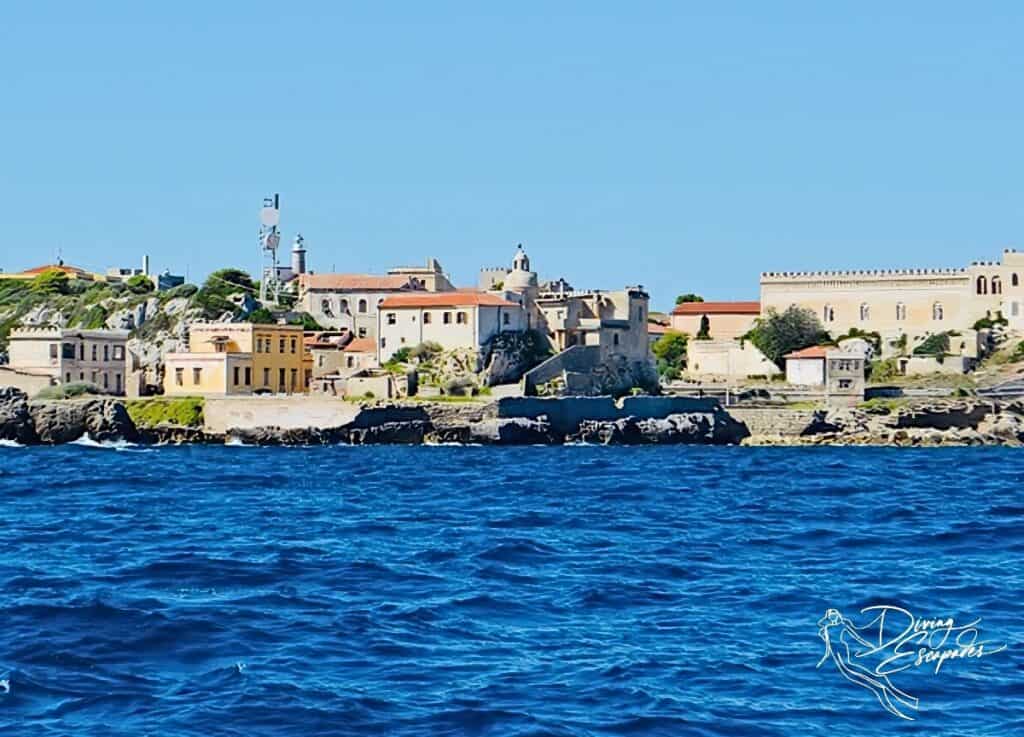
Because of its protected status, diving here is a special trip offered by select dive centers, making it one of the most exclusive and pristine dive experiences in the region.
The stars of the show? Massive groupers—and we’re talking giants. These fish are so used to divers that they swim right up to you, making for some seriously up-close encounters.
Apart from the occasional dolphins I’ve spotted on the surface during the boat ride, the groupers here are the biggest creatures I’ve seen in my Mediterranean dives. They are massive, and yet, their slow, gentle movements give them a peaceful presence. It’s fascinating to watch them glide effortlessly, completely unbothered by divers.
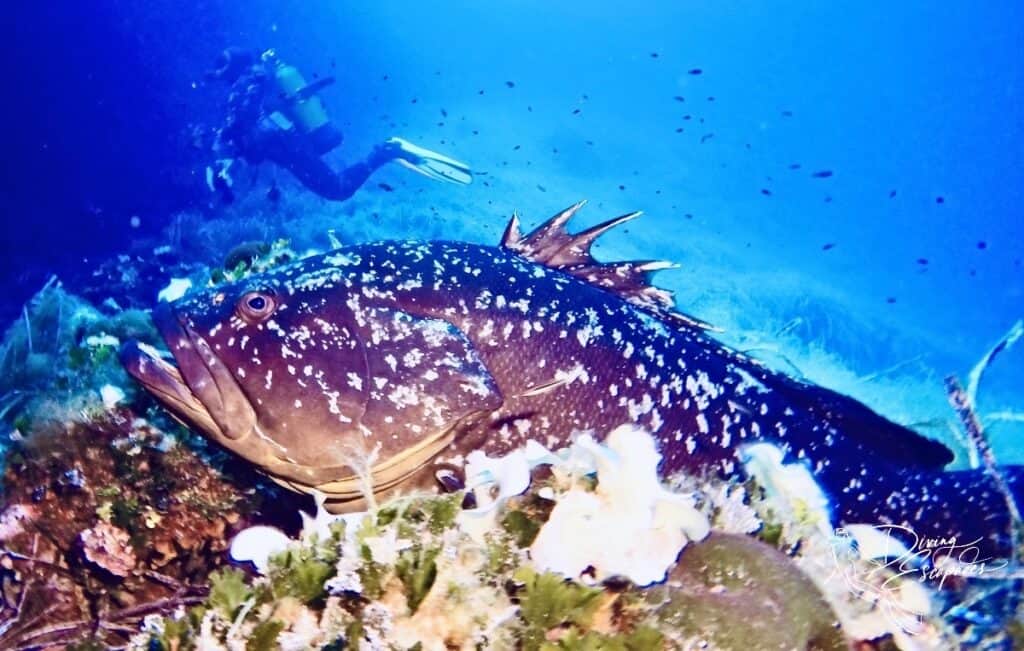
But the groupers aren’t the only attraction. This site is teeming with life, from huge schools of barracudas to curious sea bream and dentex. Tuna occasionally make an appearance, cutting through the blue at lightning speed, while moray eels poke their heads out of rocky hideouts.
With crystal-clear visibility and a depth of 30+ meters, Pianosa feels like a private underwater dive site.
PRO TIP: You’ll need an Advanced Open Water certification to dive here, and only selected dive centers are allowed to operate in the area. Book your dive in advance to secure a spot. If you love big fish encounters, this is where you want to be.
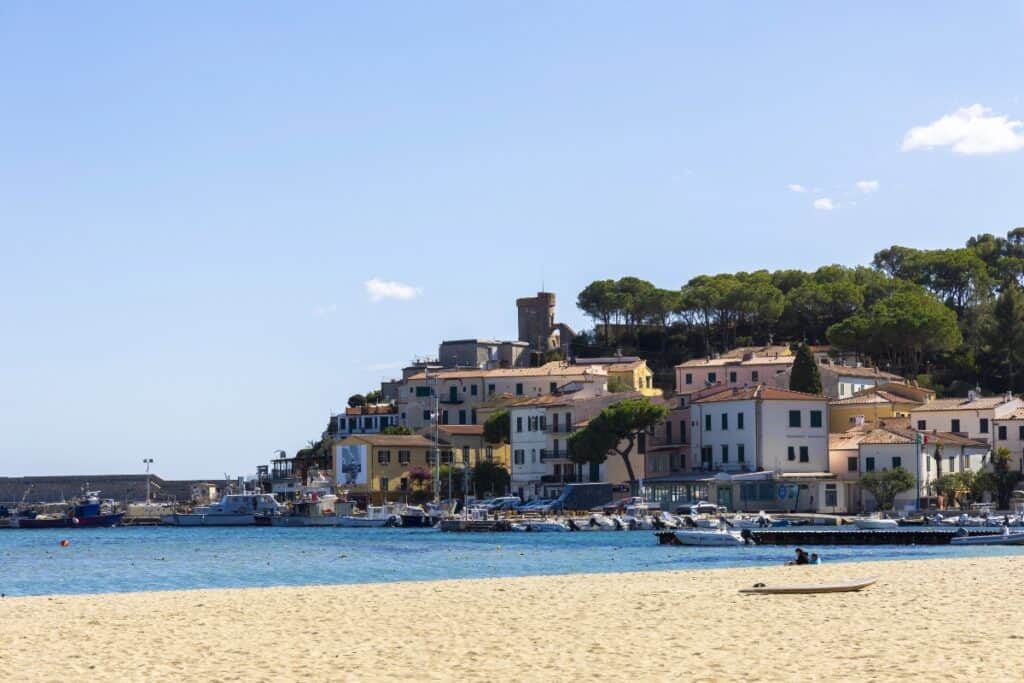
Best Time to Dive in Elba Island
The sweet spot for diving here? May to October.
- May-June: Fewer crowds, clear water, ideal diving conditions.
- July-August: Warmest waters (~26°C), peak marine life activity, but also peak tourist season.
- September-October: Less crowded, still great diving, and the sea remains warm.
PRO TIP: If you want peaceful dive sites, avoid mid-August—as this is the peak of summer holidays in Italy, things can get very busy both on land and underwater.
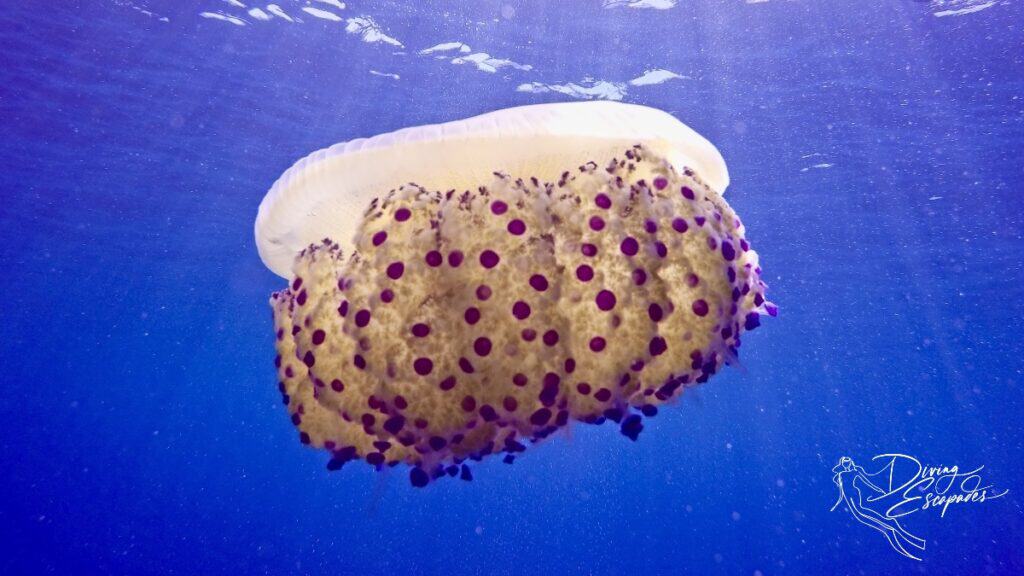
Where to Stay in Marina di Campo
Looking for the perfect base between dives? Here are my top recommendations:
📍 Budget Option: Camping La Foce or Camping Ville Degli Ullivi
If you’re after a budget-friendly stay with a laid-back vibe, Marina di Campo has great camping options. Camping La Foce offers shady pitches, bungalows, and direct access to the beach, making it a solid choice for divers who love the outdoors.
Camping Ville Degli Ullivi, on the other hand, is a well-equipped campsite with a pool, spa, and even an on-site pizzeria. Both campsites are close to the beach and within easy reach of dive centers.
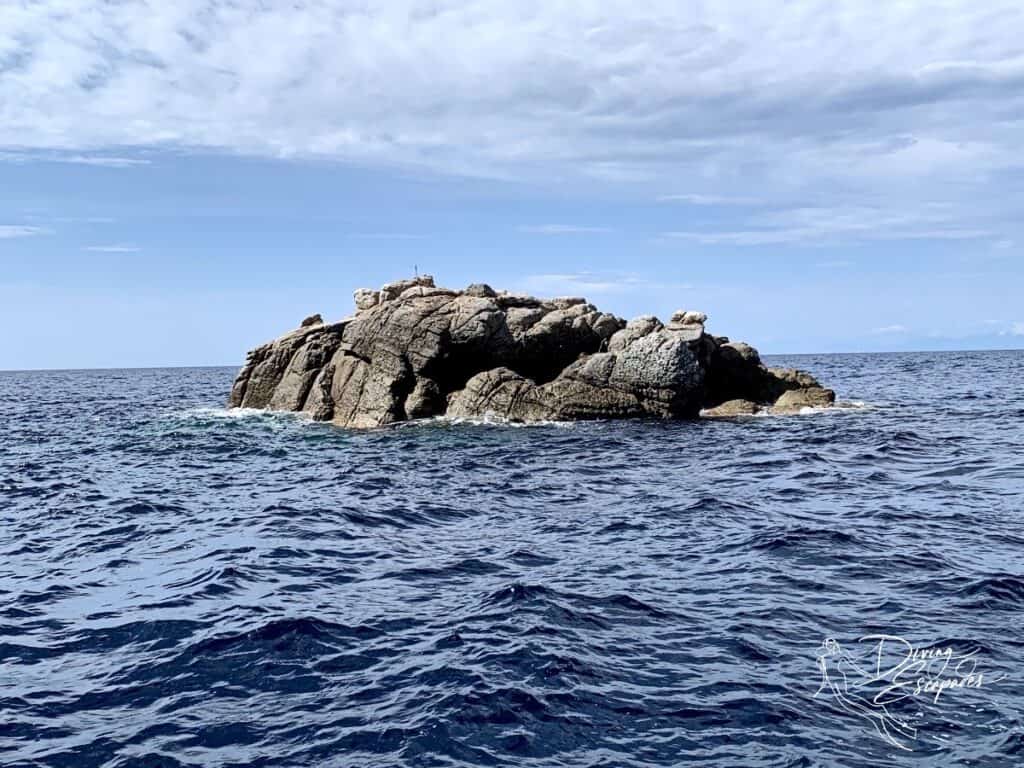
📍 Mid-Range Option: Hotel Monte Cristo
For beachfront convenience with extra comfort, Hotel Monte Cristo offers a sea-view terrace, a pool, and easy access to restaurants for your post-dive meals. It’s a great mix of relaxation and practicality without the luxury price tag.
Check availability and book your stay at Hotel Monte Cristo here.
📍 Luxury Option: Iselba Residence Hotel
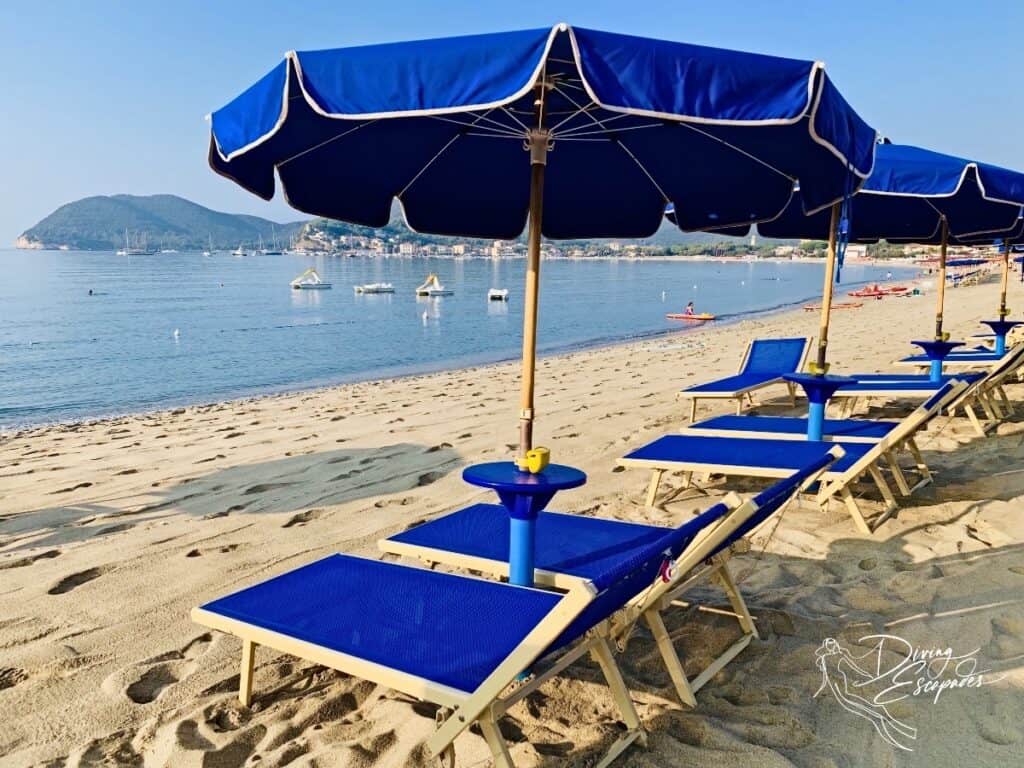
If you’re looking for a beachfront retreat with private access, lush gardens, and spacious suites, Iselba Residence Hotel is a fantastic choice. My family and I stayed here during two summers, and it was perfectly located for both diving and relaxing.
They even have a beachfront swimming pool, which is great if you’re traveling with kids or just want a dip between dives.
Check availability and book your stay at Iselba Residence Hotel here.
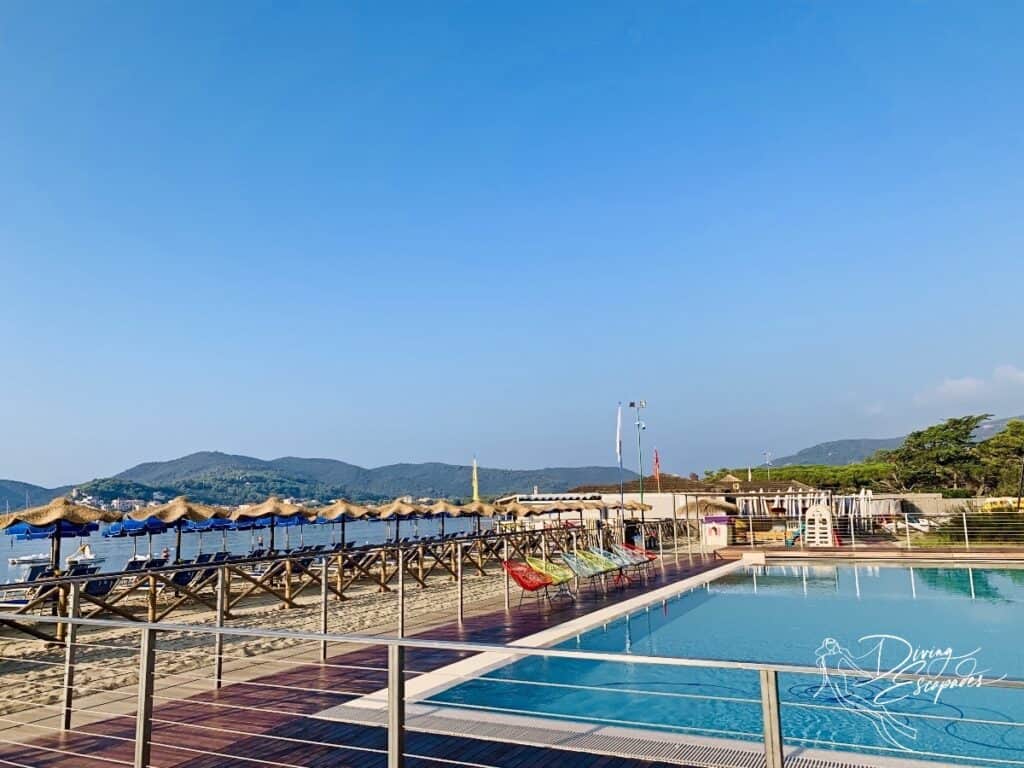
How to Get to Elba Island
Reaching Elba is easier than you think—no complicated island-hopping required. With ferries, flights, and train connections from mainland Italy, you’ll be soaking up the Tuscan island vibes in no time.
👉 Fly to Pisa, Florence, or Rome: These are the closest major airports, with Pisa being the most convenient if you’re aiming for a quick transfer.
From there, you can take a train or rent a car to reach the ferry terminal in Piombino.
👉 Train or Drive to Piombino: The Piombino Port is the gateway to Elba. If you prefer a scenic journey, the train takes you straight to the port. Renting a car is another great option, giving you flexibility to explore Tuscanybefore catching the ferry.
👉 Ferry to Elba – Multiple ferries run daily to Portoferraio, Rio Marina, and Cavo, but Portoferraio is the main and most convenient arrival port. The ferry ride is part of the adventure—grab a seat on the deck and enjoy the view of Elba appearing on the horizon.
PRO TIP: Check luggage rules if you’re bringing heavy dive gear, as some ferry companies have restrictions. To book your ferry, check schedules and availability with providers like Toremar, Moby, or Blu Navy.
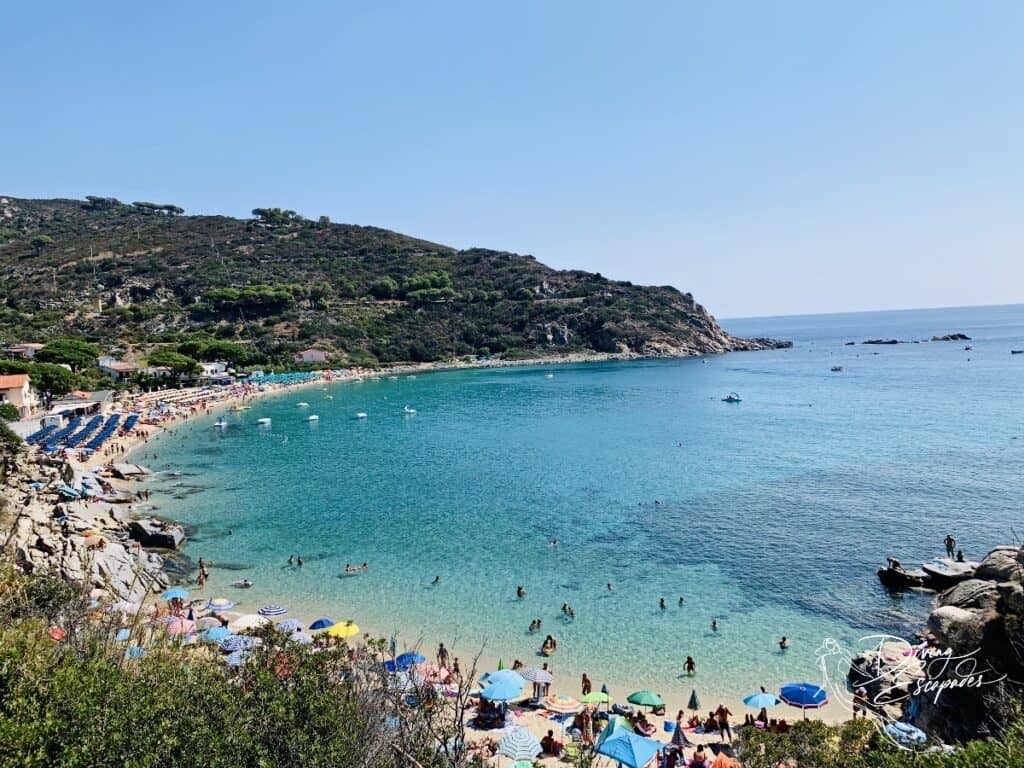
FAQs
Got questions about diving, travel, or logistics? Here are the answers to help you plan your Elba adventure.
Is Elba Island safe?
Totally! The island is super relaxed, with friendly locals and a laid-back vibe. Just follow standard diving safety rules. This means being mindful of currents, and always diving with a reputable dive center for the best experience.
What marine species can be seen in Elba Island?
You’ll spot massive groupers, schools of barracudas, snappers, octopuses, and vibrant nudibranchs like Flabellina. If you’re lucky, you might even catch a glimpse of dolphins.
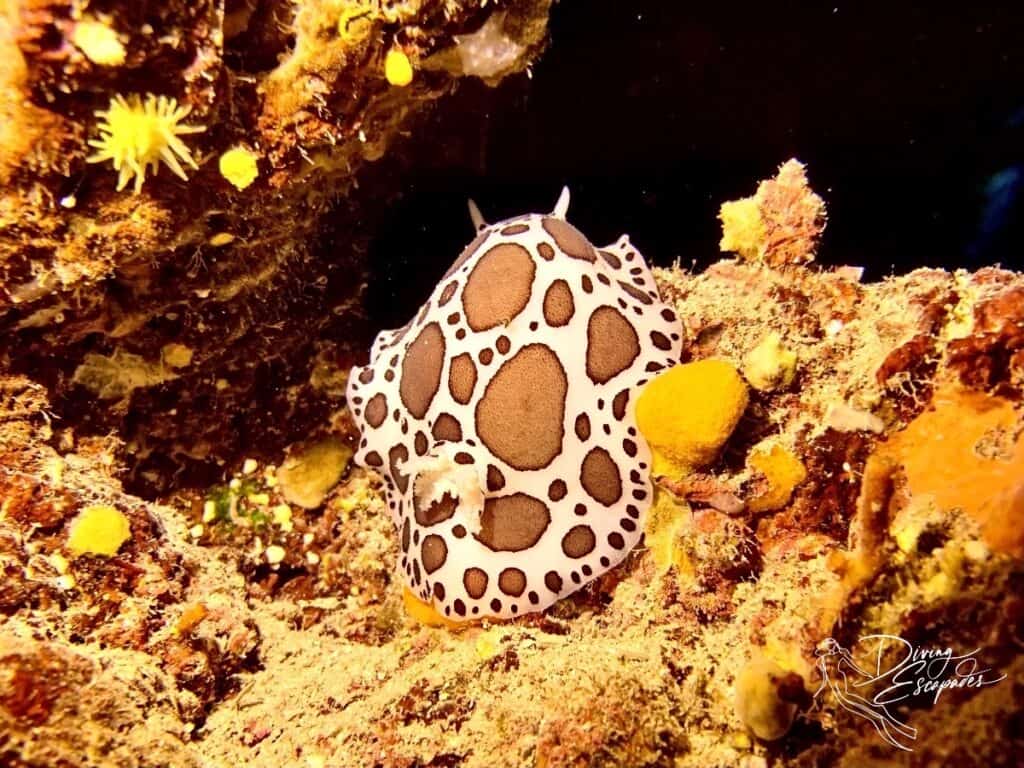
Is there good diving in Tuscany?
Absolutely! Elba Island is hands down the best diving spot in Tuscany, offering everything from colorful coral walls to wrecks and marine reserves.
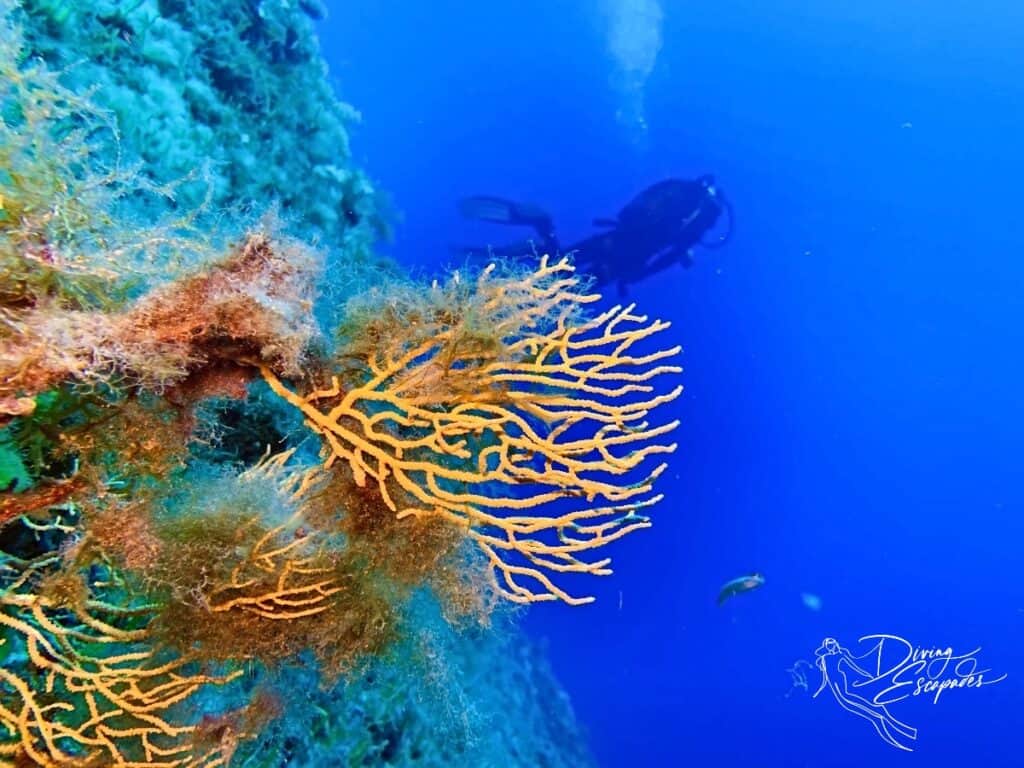
The Wrap-Up: Diving in Elba
Diving in Elba Island offers a unique blend of underwater landscapes, rich marine life, and well-preserved dive sites.
But as incredible as these dive sites are, they won’t stay this way without a little help from us divers. Practicing good buoyancy, choosing eco-friendly dive centers, and resisting the urge to poke that curious octopus all play a part in keeping Elba’s marine ecosystem healthy.
If you want to dive like a pro while protecting the ocean, check out my guide on Sustainable Diving: Why It’s The Ultimate Path Forward.
So, if you’re looking for a Mediterranean dive trip that’s equal parts adventure and relaxation, Elba is worth adding to your list. Pack your gear, book your dives, and get ready to experience one of Tuscany’s best-kept underwater secrets. Happy diving and safe travels!

